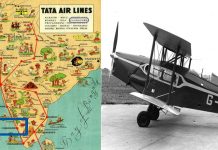How to land a plane: Top 10 things you need to know
Have you ever wondered what you would do if the pilot became unconscious?
If there is no one else capable of flying the plane, the safety of passengers may depend on you making several important decisions.
Video: Captain’s view Breakoff landing Amsterdam – Boeing 747-400
Video – The Pilot Channel
Here’s our handy guide on how to land a plane.
1. The captain usually sits in the left seat where the majority of instruments are. Fasten your seat-belt and shoulder harness if there is one.
2. Level the aircraft. If the plane is noticeably ascending, descending, or turning, gently bring the plane into a level flight altitude.
Adjust the flight altitude by pulling the yoke – the plane’s equivalent of a steering wheel – toward you to bring the nose up or push it forward to lower the nose.
You can correct bank (turning) by rotating the yoke left or right to turn in that direction.
3. Look for the altitude indicator. Sometimes called the artificial horizon, it consists of a miniature set of “wings” and a picture of the horizon.
The top is blue and the bottom is brown. On some aircraft, the altitude indicator is displayed on a computer screen in front of the pilot.
Make sure you stay level with the horizon using this guide.
4. Turn on autopilot. Turn it on by pushing buttons labeled “AUTOPILOT” or “AUTO FLIGHT,” “AFS” or “AP” or similar.
5. Call for help on the radio. Look for a hand-held microphone, which is normally to the left of the pilot’s seat just below the side window.
Find the microphone or take the pilot’s headset, press and hold the button, and repeat “Mayday” three times followed by a brief description of your emergency.
Remember to release the button to hear a response. An airport flight controller will help you fly the plane to a safe landing.
Listen carefully and answer their questions to the best of your abilities so they can better assist you.
6. Maintain a safe speed. Look for the airspeed indicator (usually labeled ASI, Airspeed or Knots) usually located toward the upper left of the instrument panel, and keep an eye on your speed.
Do not fly a small two-seater less than 70 knots. Do not fly a large plane at less than 180 knots.
Ultimately, just make sure the needle stays in the “green” zone for normal flight, until you can get someone on the radio to help.
If the airspeed starts increasing, and you haven’t touched the throttle, you’re probably going down, so pull back gently on the control yoke.
If the airspeed is decreasing, gently push the nose down to increase the speed. Do not let the aircraft fly too slowly, especially near the ground – it may stall.
7. Begin the descent. The controller you are talking to should brief you on the landing procedures for the aircraft and direct you to a safe spot to land.
To start descending the plane, pull back the throttle (to reduce power) until you hear the sound of the engines change – then stop
Keep the airspeed within the green arc. The nose of the aircraft should drop on its own without pushing forward on the yoke.
8. Get the landing gear down, if it’s retractable. If the gear is fixed, it’s always down and you don’t need to do anything.
The gear handle is usually just to the right of the center console, above where the knee of the co-pilot would be.
If you need to land on water, however, leave the landing gear up.
9. Just before you touch down, you’ll need to raise the nose of the aircraft and land on the main wheels first.
You need to lift it by typically 5-7 degrees in a sma
10. Gently apply the brakes by pressing on top of the rudder pedals. Use enough pressure to stop the plane without skidding.
The rudder pedals themselves are used to steer the plane on the ground, so don’t use them unless the plane is veering off the runway.
ll aircraft, and up to 15 degrees in a larger aircraft.
Reduce power to idle by pulling the throttle – a black lever usually located between the pilot and co-pilot – all the way towards you, until you reach the sign labeled idle.



















